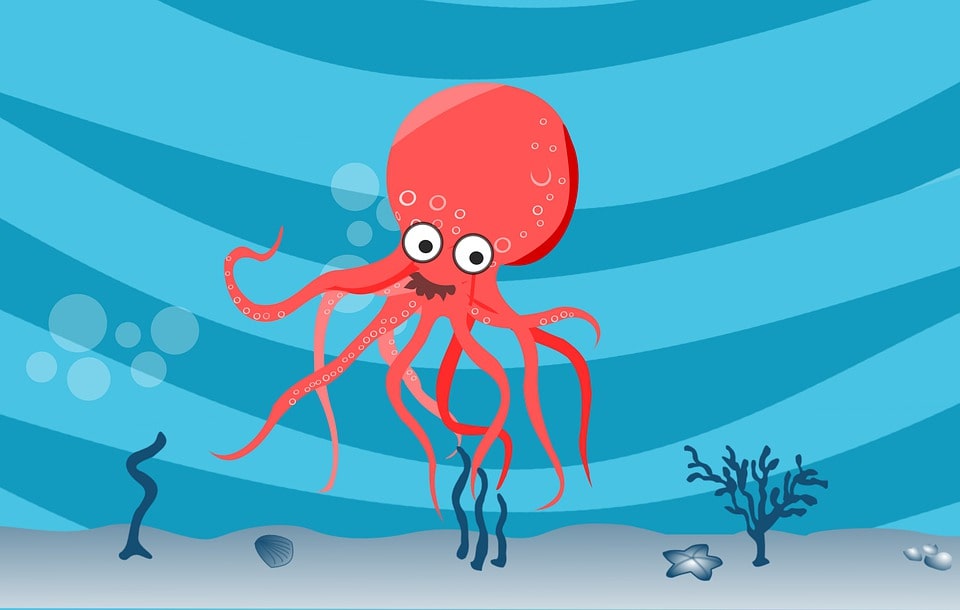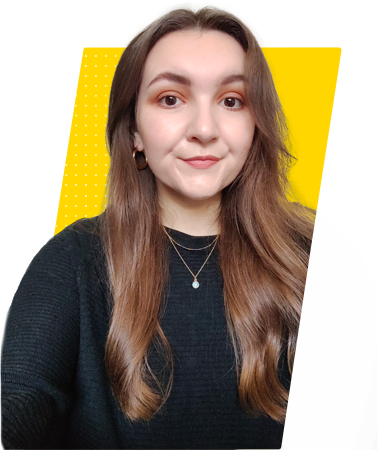Digital PR
Build an Octopus: Link Building Framework for Digital PR Campaigns
Why only have one link building angle when you can have several?
Creative campaigns for link building and digital PR can be a risky business – if you’re doing it right. Their success is almost always measured on how many links and placements they achieved and the types of publications it was featured in. Something we don’t (shouldn’t) control.
Hands-up if you’ve ever run one and had it bomb? Yeah, me too.
I’ve developed hundreds of campaigns for some of the world’s largest brands, building well over 10,000 links and still, it happens and it sucks.
However, I’ve learned from it, adapted and found ways of improving our chances to get those big wins through diversifying our creative process. It’s a framework I affectionately think of as building an octopus. George more aptly and professionally calls it Creative Diversification.
It doesn’t matter the vertical you’re working in or the domain you’re trying to build links/exposure for – the whole idea is to give yourself multiple angles (there’s my Octopus connection) to work with and open up your ‘journalistic pool’.
As digital PRs, it’s easy to get stuck on a concept, especially in the ideation and production stage. You had your brainwave of a concept, you can see the headlines and the niche of publications that are going to lap-it-up, but…what if it fails? I know you know it won’t, but what if it does?
This first stage of any creative campaign is when you have the perfect opportunity to continue building on your concept and giving it some more legs (lol) to work with. Build out the themes within your core topic, envision the assets you could have and explore the directions this award-winning campaign can go in.
Key elements of building an octopus
The framework is centred on giving you more to work with and there are some key elements to take into account in each campaign:
- Topical range
- Asset options
- Working material
- Target markets (campaign dependent)
Let’s break those down a little bit:
Topical Range
Your campaign naturally has a topical focus. In outreach terms, this means there is a particular group of journalists writing about a subject that you are going to get in touch with. For example, you may have a survey asking travel related questions and therefore, your topical focus is travel and travel writers.
The company you’re working with could specialise in anything, but you want to ensure your focus is on topics that a) have a lot of writers covering it and b) allow you to tap into different conversations.
This gives you the opportunity to take the core topical focus of your company (or client) and expand it into a conversation more people are having. This is something I’ve seen people struggle with for years, typically saying things like “but how can I get people to talk about central heating?”. By ensuring your range here is wide enough, you give yourself the opportunity to target various different niches and multiply the number of journalists you’re able to reach.
Asset Options
When working on a campaign, the asset(s) you share not only has to be engaging but something journalists can easily use. Building a huge interactive asset, with scrolling features and animations can make it look nice and increase your link conversion rate, but your assets have to be well planned.
Not all journalists understand how to insert an iFrame. Not all even understand what they can do with a GIF.
By ensuring you have numerous options available, you give journalists the option to use the one most appropriate for them. Static images are always a win because your audience is used to them. Plan this aspect from the start and ensure that however big your campaign is going to be, you have an adaptable asset plan that ticks these boxes. Otherwise, you could get stuck with an asset people just don’t know how to use and performance will suffer even with a great story to share.
Working Material
Our approach to outreach was covered by Stephen Panico at Verve’s Outreach conference. One of the key discussion points was the information we tailor to each journalist and the material we offer them. This ranges from a release we’ve written to bullet points or linked to raw data sets.
This is something that needs to be considered throughout a campaign and isn’t just a last minute decision.
The material offered to journalists is critical. It’s well known how many [insert huge number] emails they receive a day and how important it is to cut-through, but when you do, you need to make sure they have enough material to work with. Otherwise they start having to dig or ask questions. Think of it like page load speeds, the longer this process takes, the less likely you are to convert.
Particularly post-pandemic, this becomes even more important. The time people have has reduced and therefore a good old-fashioned bit of back and forth isn’t as fluid as it was. Give writers the material they need or they may just pass up your story due to time constraints – and that would suck.
Target Markets
This will depend on what your ideal outcome is, but if you’re looking for absolutely maximum exposure, you want to focus on a topic that is market agnostic.
Give yourself the maximum opportunity by opening your topic up to something people (cough *journalists* cough) can relate to in every part of the world.
Caveat: If you’re trying to push organic performance in a particular market, it makes much more sense to focus locally and so this element doesn’t need to be a factor.
However, if your client is global or more topically focused (e.g. house plants), please please please ensure your campaign can be enjoyed by writers across markets. Campaigns that hone in on the UK or the US for no reason are just limiting their potential. Create a campaign that avoids being tied to one location and this can have a huge impact on your journalistic pool as a result.
The Concept in Action
I’ve always found examples as the best method of learning and helping to illustrate the points I’m trying to get across, so I’ll use a couple of examples from throughout my career to help communicate the reach we gave our campaigns.
Life Without Bees
Thankfully, this one is still around: http://www.fairmont.com/infographics/life-without-bees/
The ‘Life Without Bees’ piece was one my team created at Builtvisible for Fairmont Hotels (shout out to Jennifer Forbes!). Like any luxury brand, Fairmont (FRHI) had tight guidelines on the topics they wanted to talk about and how they wanted to be portrayed in the media.
We launched in the region of 50 creative campaigns for them, generating well over 1,000 links across their multiple brands and individual hotels. So we were well versed in the brand(s) and what journalists in the space were looking for.
The ‘Life Without Bees’ piece had some key elements to it that we made sure gave us a range of possibilities:
- It focused on food, climate change and, in particular, bee decline (topical range)
- We utilised what we called ‘slidey-slidey’ interactivity, giving us a really engaging GIF as well as static imagery (asset options)
- We included facts and statistics for journalists to work with such as “90 percent of orange trees depend on pollination by bees” alongside our asset options (working material)
- Being market agnostic, the campaign was of interest to journalists in all markets (target markets), even though Fairmont operate in a set number of existing locations
Rising Costs of University
The URL for this one: https://www.self.inc/info/rising-cost-of-university/
Self Financial is a fintech operator helping people in the US to build their credit score. This opens the door to a range of topics for us to focus on, but the central theme is finance so we branched from there. The limiting factor is the single-market focus, but that’s something that can be overcome.
We know that one of the subgroups of people who need help most with their credit score are younger generations, and one of the biggest gripes younger generations have right now is the cost of further education. It’s absolutely skyrocketed in a ton of countries, not least the US.
Here’s how we used the framework to give us as many legs to stand on as possible:
- It focused on the cost of education, feeding into political decision making and political discourse around eradicating student loans (topical range)
- We developed an easy to engage with map, which is easy to screenshot for the static asset and ranking system for tables or numbered lists (asset options)
- We broke down each element of University costs, giving stats on tuition fees, books & supplies, and accommodation (working material)
- Although focused on the US market, states each have publications that focus locally and want to know how they stack up against the others, giving us the opportunity to outreach to national publications and locals (target markets)
It would have been easy to miss our opportunities to expand on these topics if we didn’t have the idea of expanding our target audience in mind and giving ourselves enough shots at success.
‘Life Without Bees’ could have been a simple chart highlighting the population of bees per year. That would have been powerful, but it’s also limited. It would have only had one focus (bee decline). Meaning the links we built from major food publications wouldn’t have been possible.
A focus on US students and the rising cost of education could have been developed years prior, when the general conversation surrounding eradicating student debt was just a nice idea rather than a potential political reality. Like above, without it, we would have likely interested a few journalists, but not to the level it did.
Key Takeaways
When expanding the reach your campaign is going to have, there are some key areas to focus on to help make the framework more actionable. Questioning these areas gets to the heart of the 4 elements above and makes sure you are focused on the output of your campaign and not getting stuck in the concept itself.
How many journalists will care?
This is absolutely critical for you and something that you cannot easily pivot towards later on. Always be asking yourself if the campaign you are working on has enough people who will want to write about it.
If link volume and quality is a priority (and it is for 99% of people) make sure you’ve given yourself the best shot at opening your angles up and merging topics where you can.
Write a list of the assets you’re going to offer
A simple list can make all the difference. You may realise that when you’re done with the campaign and ready to start outreaching that you only have a press release. That may still work, but getting some branded imagery created to help illustrate a key data-point could be the difference between 5 links and 15 because of the snow-ball effect.
Likewise, if you’re working on a big interactive project, what are you outreaching with? If you get to launch day and then have the conversation with the design team that you actually need some static imagery to use or if the developer can export the data in an easy to read format, you might not like the answer.
How strong is your back-up hook?
Any presentation I’ve done on link building has always made reference to the hook. During the entire ideation process, I consider the hook to be the deciding factor to pitch a campaign or not. The first hook is usually pretty easy to consider, but what about the second one – what does the back-up sound like?
This ties back to topical range but it’s something I’d highly recommend considering asap.








